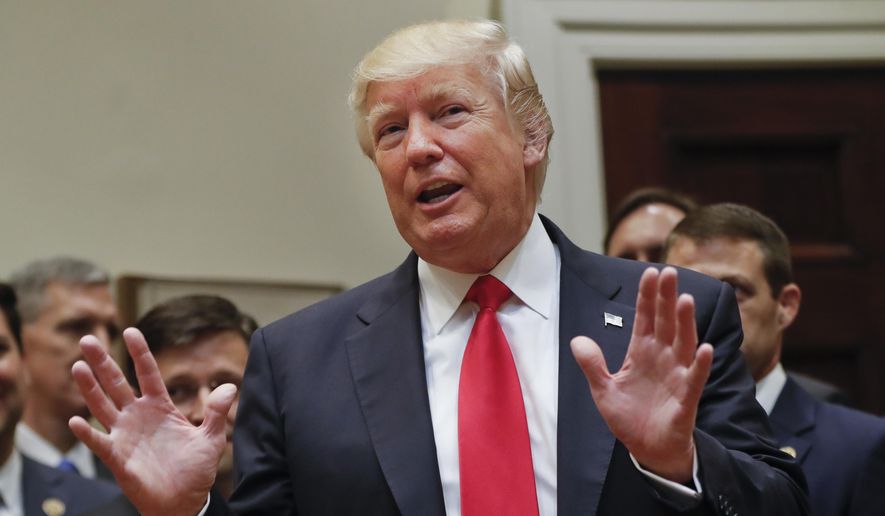President Trump has insisted that his press coverage has been historically negative, and a newly released Harvard journalism study backs him up.
A major study released Thursday by the Harvard Shorenstein Center on Media, Politics and Public Policy found that the coverage of Mr. Trump during his first 100 days was “unsparing,” with negative reports outnumbering positive ones by 80 to 20 percent.
“Trump’s coverage during his first 100 days set a new standard for negativity,” said Harvard Kennedy School of Government professor Thomas E. Patterson in the report.
He added that the coverage was “negative even by the standards of today’s hyper-critical press.”
At the same time, Mr. Trump has received more press coverage in general than previous presidents. He was the topic of 41 percent of all news stories, or three times that of previous presidencies, and he was the featured speaker in 65 percent of the stories.
The report found Mr. Trump bore some responsibility as a result of his self-inflicted “missteps and miss-hits,” but also warned that the unrelenting negative coverage could also erode public trust in journalism.
“The fact is, he’s been on the defensive during most of his 100 days in office, trying to put the best face possible on executive orders, legislative initiatives, appointments, and other undertakings that have gone bad,” said Mr. Patterson. “Even Fox has not been able to save him from what analyst David Gergen called the ’worst 100 days we’ve ever seen.’
“Nevertheless, the sheer level of negative coverage gives weight to Trump’s contention, one shared by his core constituency, that the media are hell bent on destroying his presidency,” he said.
The lack of balance “has changed few minds about the president, for better or worse,” but the perception that journalists are out to get Mr. Trump threatens to weaken the media’s role as a watchdog.
Mr. Patterson said the White House’s best period was week 12, after the cruise missile strike on a Syrian airbase in response to the Syrian nerve-gas attack on civilians, when his coverage was 70 percent negative and 30 percent positive.
“The nation’s watchdog has lost much of its bite and won’t regain it until the public perceives it as an impartial broker, applying the same reporting standards to both parties,” Mr. Patterson said. “The news media’s exemplary coverage of Trump’s cruise missile strike on Syria illustrates the type of even-handedness that needs to be consistently and rigorously applied.”
The report examined three U.S. newspapers—the New York Times, Wall Street Journal and Washington Post—and four television networks: CNN, NBC, CBS and Fox. Three European outlets were included: ARD, Financial Times and BBC.
The most negative coverage, according to data provided by Media Tenor, came from the German broadcast outlet ARD, which was 98 percent negative and 2 percent positive, followed by CNN and NBC, which were 93 percent negative and 7 percent positive.
The least negative reporting came from Fox, which was 52 percent negative and 48 percent positive, followed by the Wall Street Journal, which saw a 70-30 split.
Mr. Trump, who has accused the media of dealing in “fake news,” ramped up his criticism this week by declaring that he has been the victim of a “witch hunt.”
The Trump campaign released a fundraising video Thursday accusing the president’s foes in the media of “SABOTAGE,” saying that the “Fake News Media is working hand-in-hand with Washington’s corrupt bureaucracy to try to slow and block our America First Agenda.”
While hard-hitting press coverage of the White House has become the norm, stories about Mr. Trump’s first 100 days were “negative even by the standards of today’s hyper-critical press.”
The contrast with President Barack Obama’s first three months in 2009 was especially stark.
“Of the past four presidents, only Barack Obama received favorable coverage during his first 100 days, after which the press reverted to form,” said Mr. Patterson. “During his second 100 days, Obama’s coverage was 57 percent negative to 43 percent positive.”
• Valerie Richardson can be reached at vrichardson@washingtontimes.com.




Please read our comment policy before commenting.